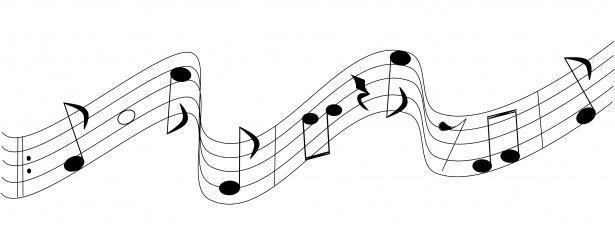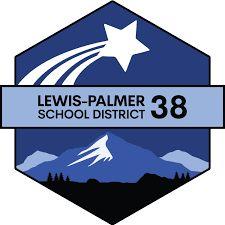Lewis-Palmer
School District 38
is proud to present the

School District 38
is proud to present the
Featuring the…
Palmer Ridge High School Wind Ensemble & Lewis-Palmer High School Wind Symphony

April 14, 2025 7:00 PM
Lewis-Palmer High School Auditorium
Palmer Ridge High School Wind Ensemble, Ms. Sarah Romero, Conductor
Down a Country Lane
First Suite in Eb
Copland/trans. Merlin Patterson
Holst I. Chaconne II. Intermezzo III. March
Lewis-Palmer High School Wind Symphony, Mr. Sam Anderson, Conductor
The Old Boatman………………………………….……………………………Florence Price/arr. Dana P. Perna
An American in Paris
Gershwin/arr. Jerry Brubaker
Flute
Cameron Bernard*#
Hayden Fields*
Cora Grayson*#
Chloe Howver*#
Seger Lage*#
Oboe
Lauren Larson
Ryder Swoveland*
Ruby Taylor
Clarinet
Emily Kane#
Everleigh Larsen*&#
Caitlyn Lewandowski*#
Lizzy Sapp (bass)*&#@
Nathan Stevenson*
Saxophone
Hailey Byrne (alto)
Aaron Dille (alto)#
Conner Lewandowski (alto)*#
Sophia Mattea (tenor)#
Bonnyeclaire Patterson (bari)*#
Trumpet
Sierra Felger#
Owen Miller
Horn
Addie Seymour
Trombone
Carter Larson#
Jax Pemberton*
Kimber Walker
Euphonium
Ella Blakeley*#
Joshua Hedstrand
Quinn Lusk
Tuba
Paul Woody*$@
String Bass
Kristin Graham*&#
Percussion
Luke Bridges
Matthew Davis
Noah Helland#
* - CO All State Band
& - CO All State
Orchestra
# - All City Honor Band
@ - CU Honor Band
! - CSU Honor Band
Flute
Anna Carl
Max Keener
Erin O’Connors
Oboe
Michael Nunez#
Lily Sobers#
Clarinet
Viktor Duling
Lauren Johnson
Abigail Meggett
Katy Oliger
Cooper Wentworth#
Bass Clarinet
Ella Armstrong#
Mackenzie Loew
Saxophone
Brekkan Kelly, bari@
Blake Stolley, tenor
Julianna Wainright, alto
Trumpet
Ashley Forsyth*#!
Carter Grizzle
Brian Hawkins
Evan Marsh&#
Vaughn Slivka
Horn
Noelle Garcia
Euphonium
Nathan Bird*#
Trombone
Kelvin Duling*
Benjamin Egbert
Grace Kovar, bass
Liam Miske
Tuba
Charles Scott
Percussion
Alex Chapman&#@!
Brie Chester#
Zac Smith
On June 29, 1962, Life Magazine featured Aaron Copland's composition Down a Country Lane. The piece was commissioned by Life in hopes of making quality music available to the common pianist and student. The work was featured along with an article title "Our Bumper Crop of Beginning Piano Players". The article explains, "Down a Country Lane fills a musical gap: It is among the few modern pieces specially written for young piano students by a major composer." Copland is quoted in the article of saying "Even third-year students will have to practice before trying it in public." Copland then explains the title: "The music is descriptive only in an imaginative, not a literal sense. I didn't think of the title until the piece was finished -- Down a Country Lane just happened to fit its flowing quality."
Copland is very descriptive in his directions on how the piece should be played. The piece begins with instructions to play "gently flowing in a pastoral mood"; a brief midsection is slightly dissonant and to be played "a trifle faster"; and the ending returns to the previous lyrical mood. Down a Country Lane was orchestrated for inclusion in a youth orchestra series and premiered on November 20, 1965, by the London Junior Orchestra. The band arrangement was completed by Merlin Patterson in 1988. Patterson specialized in Copland transcriptions. Copland himself spoke of Patterson's excellent work upon the completion of Down a Country Lane, saying that he produced "a careful, sensitive, and most satisfying extension of the mood and content of the original."
-Program note from score
Gustav Holst’s First Suite in E-flat for Military Band occupies a legendary position in the wind band repertory and can be seen, in retrospect, as one of the earliest examples of the modern wind band instrumentation still frequently performed today. Its influence is so significant that several composers have made quotation or allusion to it as a source of inspiration to their own works.
Host began his work with Chaconne, a traditional Baroque form that sets a series of variations over a ground bass theme. That eight-measure theme is stated at the outset in tubas and euphoniums and, in all, fifteen variations are presented in quick succession. The three pitches that begin the work -E-flat, F, and B-flat, ascending -- serve as the generating cell for the entire work, as the primary theme of each movement begins in exactly the same manner. Holst also duplicated the intervallic content of these three pitches, but descended, for several melodic statements (a compositional trick not dissimilar to the inversion process employed by the later serialist movement, which included such composers as Schoenberg and Webern). These inverted melodies contrast the optimism and bright energy of the rest of the work, typically introducing a sense of melancholy or shocking surprise. The second half of the Chaconne, for instance, presents a somber inversion of the ground bass that eventually emerges from its gloom into the exuberant final variations.
The Intermezzo, which follows is a quirky rhythmic frenzy that contrasts everything that has preceded it. This movement opens in C minor, and starts and stops with abrupt transitions throughout its primary theme group. The contrasting midsection is introduced with a mournful melody, stated in F Dorian by the clarinet before being taken up by much of the ensemble. At the movement’s conclusion, the two sections are woven together, the motives laid together in complementary fashion in an optimistic C major.
The March that follows immediately begins shockingly, with a furious trill in the woodwinds articulated by aggressive statements by brass and percussion. This sets up the lighthearted and humorous mood for the final movement, which eventually does take up the more reserved and traditional regal mood of a British march and is simply interrupted from time to time by an uncouth accent or thunderous bass drum note. The coda of the work makes brief mention of elements from both the Chaconne and Intermezzo before closing joyfully.
-Program note by Jacob Wallace for the Baylor Wind Ensemble concert program, 19 December 2014
The Old Boatman:
Florence Beatrice Price (April 9, 1887 — June 3, 1953) was born in Little Rock, Arkansas. She began learning music from her mother at an early age and gave her first piano performance at age four, reportedly publishing a composition at age eleven. She graduated high school at the age of sixteen and in that same year was accepted into the New England Conservatory. Though a large part of her compositional output were works for piano and songs, Price is noted as the first African-American woman to be recognized as a symphonic composer, as well as the first to have a composition played by a major orchestra. This took place in 1933, when Price’s Symphony No. 1 in E minor was performed by the Chicago Symphony conducted by Frederick Stock, as part of the Century of Progress World’s Fair. Price left behind a handful of published works and hundreds of unpublished ones that are only recently beginning to become known. In 2009, a substantial collection of her works and papers was found in an abandoned dilapidated house on the outskirts of St. Anne, Illinois, which Price had used as a summer home.
Originally for piano, The Old Boatman is a shining presentation of Price’s signature style. It is reminiscent of Edvard Grieg, specifically his Lyric Pieces, and 19 Norwegian Folk Tunes, Op. 66. The first statement is in E-flat Major, then modulates to F Major.
- Program Note by arranger
Gershwin was best known as a writer of music for the entertainment market, but he did make several excursions into the realm of art music. One of these was the result of a brief visit to Paris in 1926 (from which he returned with a French taxicab horn and the sketch of a melody) and a longer stay in 1928. He made use of both the horn and the melody while writing this piece during his second visit. He called the work a "rhapsodic ballet." His description follows:
" I have not endeavored to present any definite scenes in this music. The rhapsody is programmatic in a general impressionistic sort of way, so that the individual listener can read into the music such episodes as his imagination pictures for him. The opening section is followed by a rich 'blues' with a strong rhythmic undercurrent. Our American friend, perhaps after strolling into a cafe, has suddenly succumbed to a spasm of homesickness. The blues rises to a climax followed by a coda in which the spirit of the music returns to the vivacity and bubbling exuberance of the opening part with its impressions of Paris."
- Program Note from Program Notes for Band
Monday, April 21st —Wind Symphony CBA State Performance at 1:30pm
Friday, April 25th - UNC Greeley Jazz Festival - Jazz Band
April 29th/30th - Wind Symphony Auditions
Tuesday, May 6th—Band Banquet, Pops Concert, and Senior Recognition
All Band Students - 5:30 PM
Saturday, May 17th—Oboe Masterclass with Peter Cooper
May 27th-30th—D38 Summer Band

Lewis-Palmer High School Administration
Amber Whetstine, Interim Superintendent Bridget O’Connor, Principal
Brooke Mendez, Assistant Principal Troy Sides, Assistant Principal
Nick Baker, Assistant Principal / Athletic Director Stacy Roshek, Assistant Principal/ Activities Director
Lewis-Palmer High School Performing Arts Faculty
Kris Lilley, Theater
Madeline Smith, Choir Sam Anderson, Band